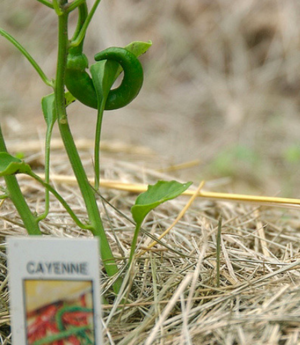
Cayenne peppers are closely related to jalapeño and bell peppers. They are a staple in Southwestern American, Mexican, Cajun, and Creole cuisine. Dried and ground, they make a powdered spice for seasoning and also feature whole in Korean, Sichuan, and other Asian cuisines.
Cayenne is also known as Guinea spice, cow-horn pepper, red hot chili pepper, aleva, bird pepper and red pepper.
Cayenne is the key ingredient in Tabasco sauce (and many other hot sauces) have cayenne in them. Cayenne pepper may have a range of health benefits, and people may experience these by using preparations that contain capsaicin or by eating the peppers. Capsaicin, an ingredient in cayenne pepper, may help with:
- relieving pain
- managing weight
- easing itching
- reducing inflammation
- treating colds and congestion
- protecting the nervous system
Growing cayenne
Growing cayenne pepper plants requires some heat. Chilies are mostly perennial in their native habitat of sub-tropical and tropical regions. If you live in an area that has a long growing season and a lot of sun, you may directly sow seeds in the garden 10 to 14 days before the last frost date. In temperate areas, chilies are grown as annuals, so when starting cayenne pepper plants from seed, it's best to do so indoors or in a greenhouse. They are very delicate and react badly to overly hot or cold weather. Sow the seeds in light, well-drained soil medium and keep in a sunny location at a temperature of at least 60 degrees F. (16 C.) until the seeds sprout in 16 to 20 days. Plant the growing cayenne pepper seedlings into flats spaced 2 to 3 inches (5-8 cm.) apart or in individual pots and allow to gradually acclimate or harden to outdoor temperatures. Generally, outdoor transplanting should occur six to eight weeks after the seeds are sown, or after all danger of frost has passed, however, if you choose to transplant before the weather is frost free, it is advisable to protect the plants with row covers, hot caps, and/or transplant the peppers through black plastic. To prepare for transplanting the cayenne pepper plants, amend the soil with fertilizer or organic compound, if need be, avoiding too much nitrogen in an area of full sun to mostly full exposure. Plant your pepper babies 18 to 24 inches (46-61 cm.) apart in a row.


